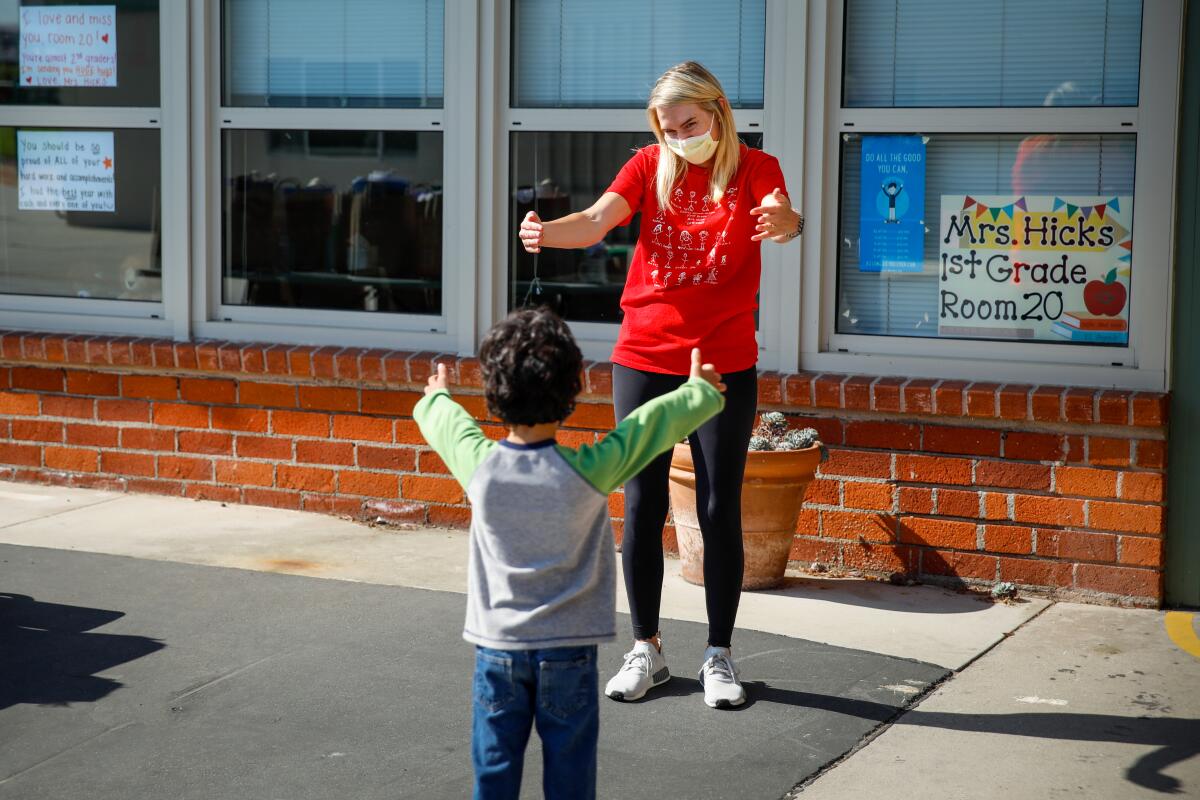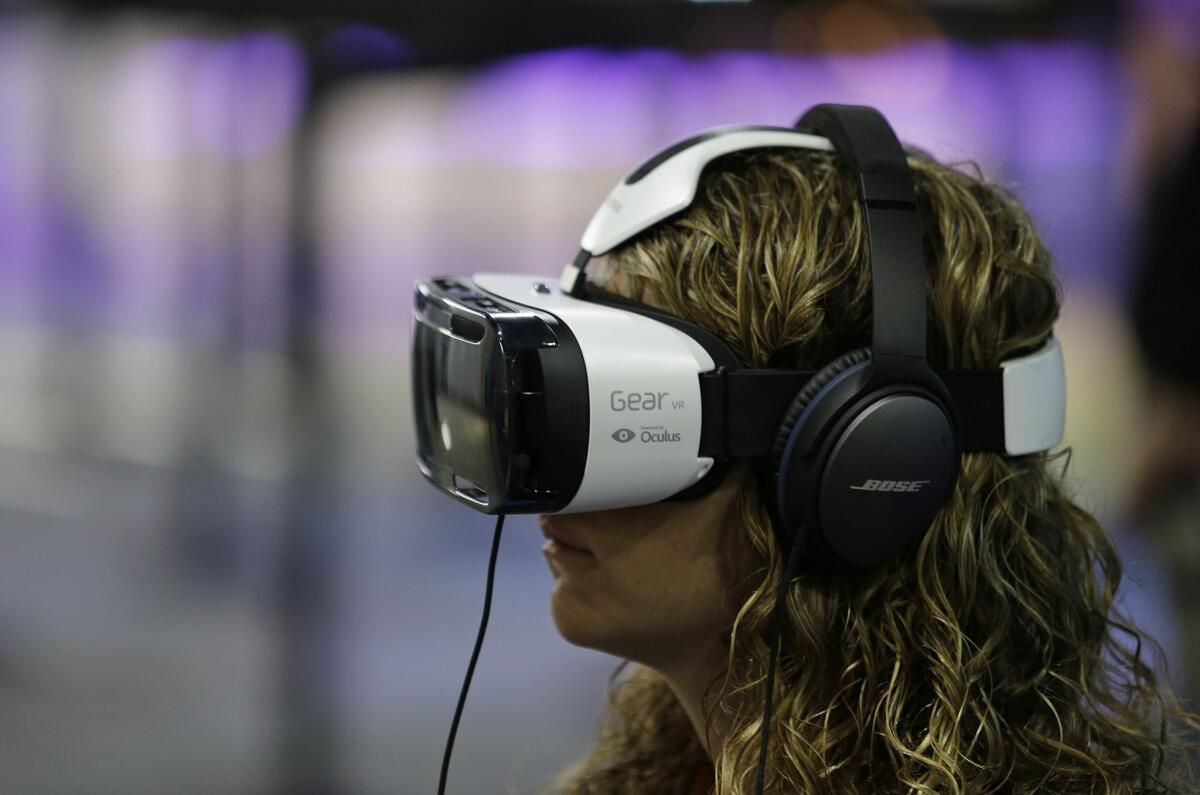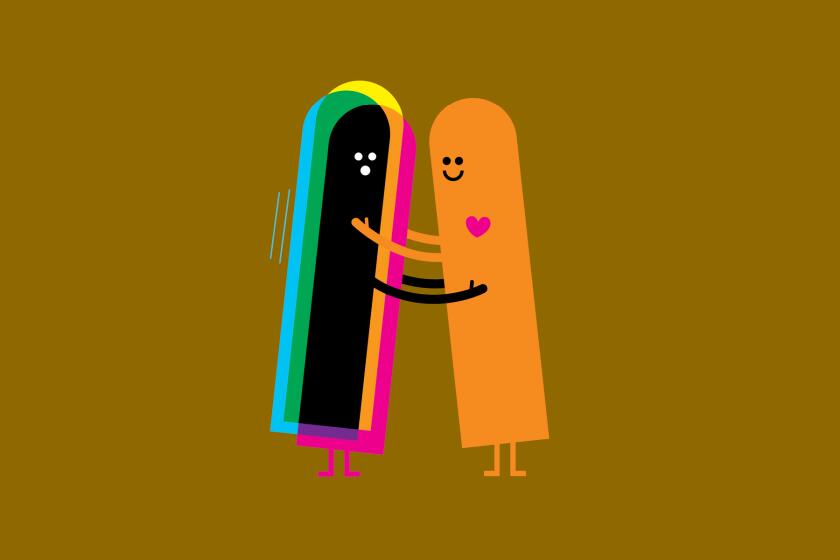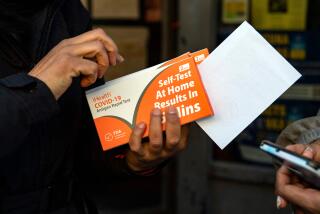You could use a hug. Here are some safe options

- Share via
Lying in a fetal position next to my laptop on a lazy Saturday afternoon, a soothing voice wafts over Zoom and asks me if my body parts are “saying anything.”
The voice belongs to Jean Franzblau, a slim woman with graying hair and a warm presence who is a professional cuddler. She began offering virtual sessions in the wake of the coronavirus outbreak, when she realized the core of her service — to offer platonic touch outside of the scope of sex and romance — now comes with serious health risk.
The business’ “whole purpose is to help people to connect people, and this virus is basically saying that’s not going to be a safe thing for most people,” said Franzblau, the founder of Cuddle Sanctuary in Los Angeles. “And I had to face that and say, ‘Is there anything I can do?’”
What can any of us do? Social and physical distancing are the mantras of the moment. Public health guidelines advise people to stay at least six feet away from those outside of their household — too far for a hug, cuddle or handshake.
For some — like the happily partnered or the content recluse — the directive might not be difficult to follow. But for those living alone who thrive on physical connection, all that distance can be lonely.
And humans do need touch.
Dr. Steven Siegel, who chairs USC’s psychiatry department, said that several studies show that pleasant, situationally appropriate touch increases activity in parts of the brain associated with pleasure and enjoyment, as well as social interactions.
“If that’s part of someone’s normal way of being ... the deprivation of that is going to be experienced as a psychological loss,” Siegel said.
But there are alternatives. Hug curtains exist. And there are some guidelines that can mitigate risk. But for the risk-averse — or the experientially curious — there are methods that don’t involve touch in the traditional sense at all.
Use your imagination
To “hug” your grandma or immunosuppressed friend, you don’t necessarily need to get out of your chair. Imagery exercises — thinking about a pleasant physical or social experience — can have similar psychological benefits as the activity itself. They are frequently used in therapy, according to Dr. Emanuel Maidenberg, head of UCLA Health’s cognitive behavioral therapy program.
However, it requires two key qualities to be effective: vividness and specificity.
“If you just close your eyes and spend some time with a friend, that’s not likely to do it,” Maidenberg said. “But if you start thinking about very specific circumstances” — including where it will take place, the time of day, what you look like, what your partner looks like — “that’s it. That’s likely to produce an emotional response that is likely to be close to what one would want.”
Go virtual

Virtual reality holds an inherent promise to allow users to transcend physical space, to see — and potentially touch — who and what’s not really there in front of them. But can a virtual hug from a friend or an AI entity offer the same warmth as an IRL embrace?
Jeremy Bailenson, founder of the Virtual Human Interaction Lab at Stanford, thinks there’s potential.
“Technologically and psychologically, it’s possible to convey emotion over virtual touch,” Bailenson said.
Bailenson pointed to a 2007 study he co-led that showed participants were able to identify, above chance, the intended emotions in a virtual handshake from other human participants. He noted that this was achieved through limited movements — mostly up and down, left and right — “meaning not as fancy as your hand is, with all the angles and the forces.”
The pandemic has inspired Bailenson to develop an app that will allow users to transmit virtual handshakes through a smartphone. For Bailenson, the tech would offer personal relief: He and his wife have become close with neighbors they met during stay-at-home orders. “And now I’ve spent 100 hours with them, and haven’t shook their hands,” he said.
As envisioned, one user will shake his phone while standing at least six feet away from the intended recipient, who will feel the movement as vibrations through her own phone.
Hug an avatar
Good news for “Animal Crossing” enthusiasts: Online interactions can offer social and emotional support at a safe distance, according to Dmitri Williams, a USC professor specializing in games and communities.
Pre-pandemic, Williams said he wouldn’t recommend people seek out needed support in video games. He’d suggest those needs be fulfilled by “people in real space.” With greatly reduced offline social opportunities, online interactions could at least temporarily fill the void.
“Is it still a net positive to go online and hang out to get social and emotional support from people as opposed to nothing? And the answer there, I can tell you without any research, is yes,” Williams said. “Something is better than nothing. These are not negative experiences.”
Games that involve building long-term teams are most likely to lead to what researchers refer to as bonding. Those type of relationships can outlast a single game and sometimes evolve into deep relationships. (Think Second Life marriages.)
If you need “to learn to trust each other and cooperate and coordinate, then you really are forced to get to know each other to win the game,” Williams said. “The ‘getting to know each other’ is the really valuable side effect.”
More than hugs
Romantic partners separated by the pandemic, or Tinder texters ready to take it to the next level, might not be satisfied with hugs, virtual or not.
But there are now technologically sophisticated ways to stay frisky from a distance, according to Carol Queen, staff sexologist at Bay Area sex toy retailer Good Vibrations.
Several sex toy companies offer vibrators and masturbation sleeves that can be controlled through a smartphone. A couple could control each other’s devices in the same bed or halfway across the world. “As long as you’ve got connectivity, you’ve got connectivity, if you know what I mean,” Queen said.
Allowing partners to experience similar sensations simultaneously, “it has a sense of the toy bridging the distance between the two of you,” Queen said, “so it can feel to some partners more mutual than showing off on FaceTime or Zoom.”
From sex-coach apps to teledildonics, options for sexual intimacy are right at your fingertips
It’s still not the same
Experts agree there is no perfect substitution for human touch. Thoughts, toys and multiplayer simulations — they’re all an approximation of something irreplaceable.
That’s why Franzblau, the professional cuddler, was as first hesitant to attempt a virtual simulation.
“There’s something deeply moving about human touch,” Franzblau said. “The human element, the human attunement, cannot be duplicated.”
She’s since found creative ways to translate sensations and presence, while acknowledging it’s “apples and oranges.”
During our session, she asked if it would be comforting to know she was watching as I drifted into a relaxed state. It was far from a hug, but it was something only human eyes — even mediated by a screen — could achieve.
More to Read
Sign up for The Wild
We’ll help you find the best places to hike, bike and run, as well as the perfect silent spots for meditation and yoga.
You may occasionally receive promotional content from the Los Angeles Times.












